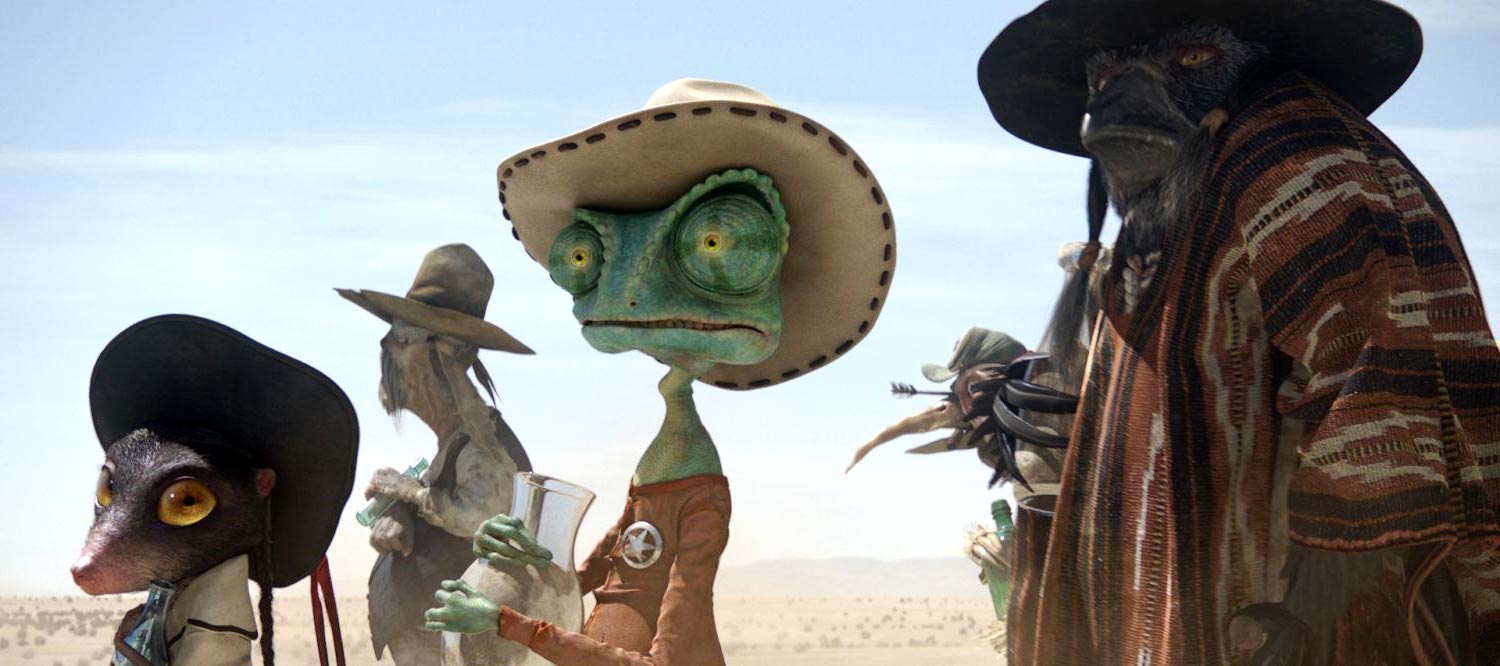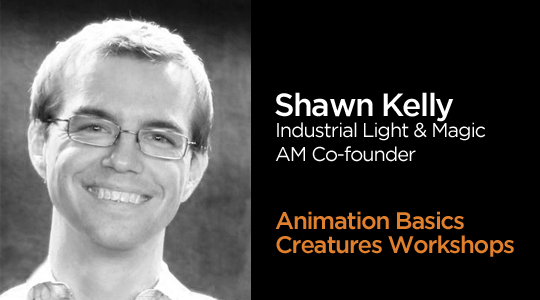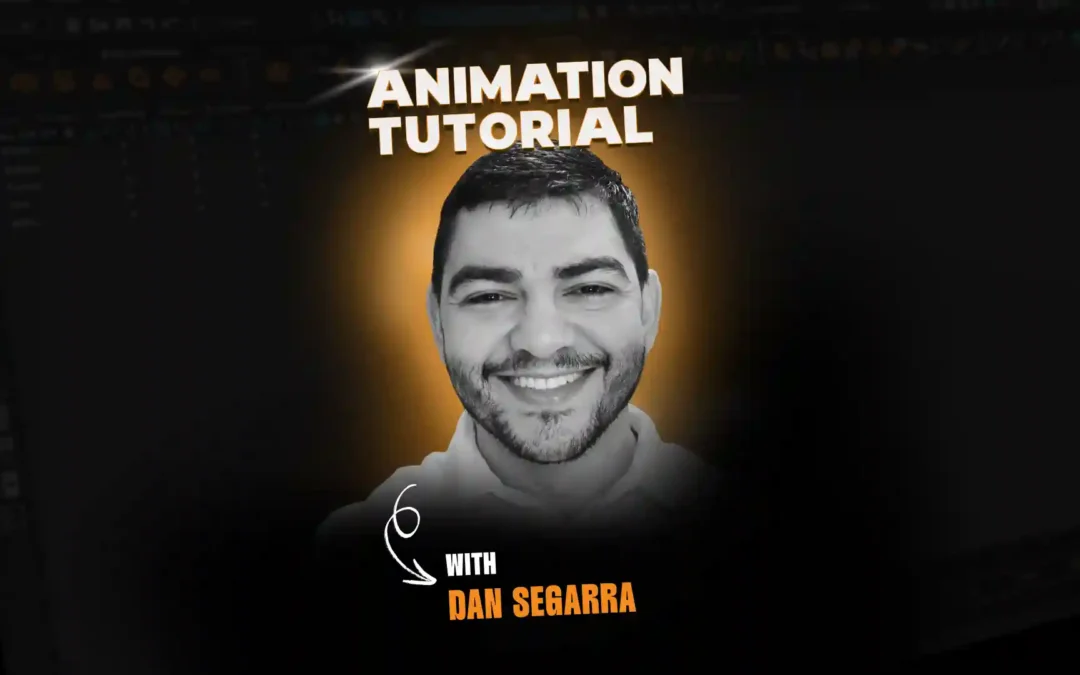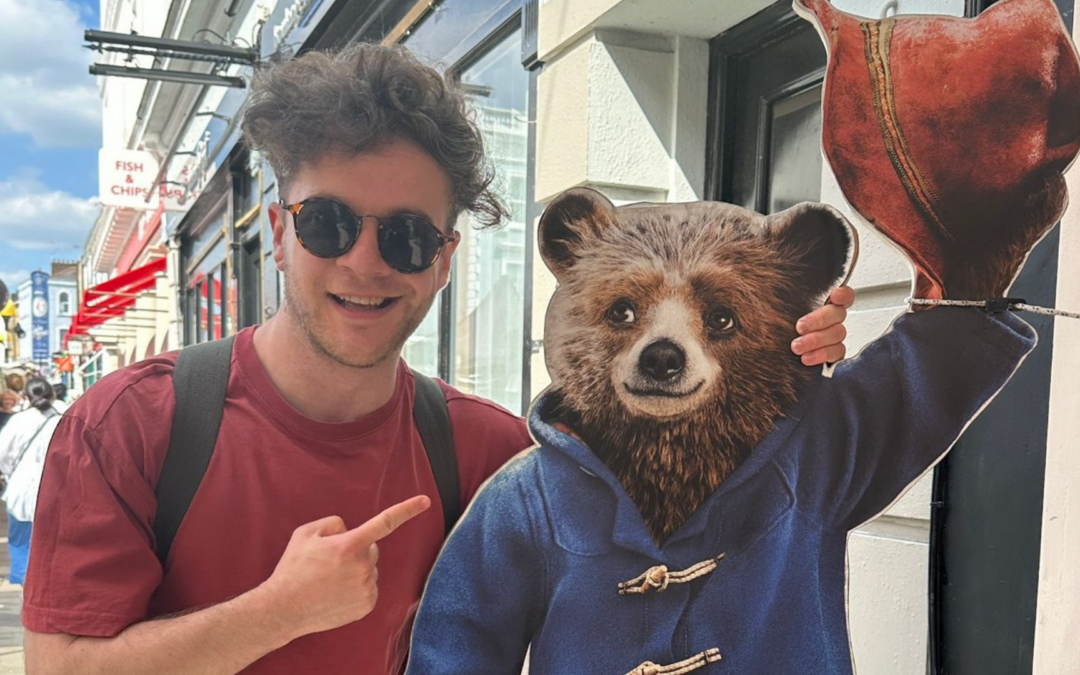
If you’re an animation student, chances are you’ve tried your hand at animating at least a single-character shot. Maybe you’ve even had a crack at multi-character shots! If so, you know those can be a bit trickier. Here are a few quick tips for shots with multiple characters from Shawn Kelly, Animation Mentor co-founder and Lead Animation at Industrial Light & Magic.
So, if you’re an animation student, which I’d assume the vast majority of you are, you’ve probably tried your hand at animating at least a single-character shot. If you’re reading this post, and you aren’t currently an animator or an animation student, then you must be one of the following:
1. An animation student on the inside, dying to bust out of the shell and dive into this fun and challenging career head-first
Or
2. My Mom
So, other than my Mom, I think it’s safe to say that you’re probably an animator or student, and you’ve probably tried animating at least a single-character shot. Many of you have taken a crack at multi-character shots, too, but I just had a couple quick tips to throw at you guys regarding shots with multiple characters.
So here we go. Pro Tip: Keep Secondary Characters Secondary
Particularly the first few years of your animation life, we are constantly plagued by the nagging, overwhelming need to have our characters doing SOMETHING at all times. We’re animators, after all, and we want to animate! A character can’t just stand there doing nothing! He’ll look dead! He should always be doing something, right!?
The danger in this, of course, is twofold – movement ceases to be initiated for a reason and just becomes movement for movement’s sake, and constantly active characters have no contrast in their performance.
In a multi-character shot, this tendency to give every character something to do can completely ruin the flow of conversation, will look far too “busy” visually, and will destroy any control you have over the eye of the audience.
If you watch your blocking and feel that the characters are competing for your attention, it’s a good sign that something is wrong…
The goal with a multi-character shot, as always, will be to clearly communicate your ideas, right? Well, in order to communicate those ideas, it will be your job to direct the eye of the audience, to lead them through the conversation. You want to stage your scene, and plan your timing in a way that allows you to hold their hand, and walk them through the animation. You need to whisper in their ear “hey, listen to what this guy is saying… okay, now – quick! Look over there! See what that other guy just did? That’s important to the story. Okay, now forget that guy, instead, pay attention to this other guy over here…”
If you can’t do that, your scene will be a jumbled mess of confusion, and at best, will never be as entertaining as it could have been. Story points will be lost, jokes will be missed, and emotions will be muddy.
The key to making things read, is to only allow secondary characters to do secondary actions.
You can get an in-depth explanation of secondary action in this great post by mentor and Guerilla Games Principle Creature Animator Kevin Koch, but the quickie version, if you don’t know, is this: Secondary actions are actions that add to the character and augment the emotions WITHOUT distracting from the primary actions in the scene. The term “secondary action” is sometimes confused with concepts such as “overlap” or “follow-through,” but it’s actually quite different.
Character 1 is shyly asking a girl out on a date, but behind his back he’s subtly fiddling with his pencil. The “fiddling with the pencil” would be a secondary action in that scene, and we know this because in almost any instance, the animator of this scene would want us focused on the character’s faces, or physical interactions – the “fiddling with the pencil” is there to subtly boost the feeling of nervousness in Character 1.
Okay, so let’s say you have a scene with three characters. They all have lines at different points in the scene. Just to make it even harder, maybe they even have lines that overlap each other. They’re talking quickly, frantic about something, or joking around. Let’s say their names are Chris, Andy, and Jay.
Well, that’s going to be a hard scene, but with some careful planning, you should be able to direct the eye of the audience, almost regardless of what the dialogue says, or how it is delivered.
The basic idea is to direct the audience’s attention through movement, anticipations, eye direction, and through the contrasting rhythms of who’s active and who isn’t at any given moment.
Let’s say Chris starts the scene off. His line is the setup for the joke that the scene is going to revolve around. Well, that sounds like a pretty important bit of dialogue for the audience to pay attention to, doesn’t it? Simply hearing the words is not going to be enough for the audience here (otherwise, they may as well be listening to a radio-play! You need to create a performance that brings the mere “words” to another level – that’s why we love watching a good acting performance!), so you need to make sure the audience not only hears Chris, but they see what he’s doing and understand his emotional state.
How do you do that with three characters in the scene? Well, there are a lot of ways, actually. The most basic of all, is to have Chris be the only character who is moving. If Chris is setting up the joke, and Andy is doing jumping jacks while Jay is running around in a circle, there is an excellent chance that the audience’s attention will be on anything other than Chris, correct? So, at the most basic, fundamental level – if Chris is talking, Andy and Jay aren’t doing anything at all. Now, that’s not going to usually be the absolute best choice for your scene. It’s probably a pretty boring choice, actually, but you know what? Better it’s boring and clear than visually stimulating but confusing. In my opinion, it’s better to have Andy and Jay basically “die” on screen, than to steal the attention of the audience away from that important story point of the moment.
That said, though, you’re much better off finding character-specific secondary actions for Andy and Jay to be doing. Maybe the three of them have just been jogging together, and now they’ve stopped to rest on some benches in a park. Chris is setting up a joke, which means that at that precise moment, he is the most important character in the scene, making him the “Primary Character.” Once you have that bit of information, you know exactly how you need to stage things. Chris’ facial expressions should be staged clearly to the audience while he’s talking (if possible), and his gestures should, generally speaking, be far bigger and/or faster than anything Andy and Jay are doing. They should probably be listening to him at this point, while doing some kind of secondary actions (since they are the secondary characters). Maybe Andy is heaving, because he’s heavier than the other two, and is really worn out from the run. So maybe he’s just sitting there breathing heavily. That could be his secondary action. Maybe Jay, who is more athletic, is sitting calmly and wipes the sweat from his brow while listening to Chris.
As long as Jay doesn’t start furiously scrubbing at his forehead, no one’s attention is going to linger on Jay during this moment. They might glance at him to gauge his reaction to what Chris is saying, or to notice that he’s sweaty, but they’ll immediately look back to Chris, since Chris is primary and Jay and Andy aren’t doing anything interesting enough to hold their attention.
When you want the audience to look at a certain character, give him something bigger to do.
So right there, you’ve controlled the eye of the audience. You’ve made a conscious decision to stage the acting performances in a way that keeps people focused on Chris.
Now, let’s say that Jay replies to what Chris has just said. At this moment, your job is most likely to transition the audience’s attention from Chris over to Jay.
Jay’s line of dialogue is enough to get you started. As soon as he starts talking, Chris and Jay trade places in the hierarchy of the scene. Jay is now top dog, and Chris has become a secondary character. Because of this, the audience will likely at least glance over to Jay as he starts talking, but this is one of many crucial moments in the scene. If Chris continues to be as animated as he was while he was talking, and Jay continues to just sit there wiping sweat from his brow while delivering his line, most people will look back at Chris.
The solution, of course, is to immediately flip Chris to doing something secondary instead of continuing his primary action, and vice versa for Jay. At this point, Jay could forget about the sweat on his brow, and be gesturing with his dialogue, or doing an even bigger action, like taking off his shoes and throwing them over his shoulder or something. That’s a big, primary, “hey everyone, look at me!” action. Since he’s talking, that’s a great place to put an action like that. With Jay talking, and Chris throwing shoes around, once again, the audience will be looking at the wrong person.
So – if your character is secondary, keep them with secondary actions only. When you want the audience to look at a certain character, give him something bigger to do. Or conversely, sometimes you make him SUPER still amidst a lot of movement – either choice will draw the eye right to the character you want people to see at that moment. The point is you have to make the conscious decision to direct our eye, so we know what we should be looking at.
The main point is that nothing should ever distract the audience from whatever it is you want them to be looking at. If one character is really active, the others should likely be pretty calm unless the story calls for a more chaotic, frantic scene. Even in a scene involving a heated debate, or very quick dialogue where the characters are talking over each other, you can use this trick of “who is secondary and who isn’t” to lead the audience through the scene, ensuring that they don’t miss a single emotion, gag, or story point.
If you watch your blocking and feel that the characters are competing for your attention, it’s a good sign that something is wrong, and the solution is very likely going to be toning down some of the characters during another’s “primary” moment.
This is getting kind of long (sorry! I always do this… D’oh!), but I just want to quickly touch on some other ways you can direct the eye:
Eye direction.
If five characters are all looking at a sixth character, every person in that audience is going to be looking at the sixth character too. If the characters suddenly look screen left, we’re going to look screen left as well, expecting that whatever or whoever they see will be revealed to us. In these instances, you are using eye movement to direct the audience’s eye through the frame.
Anticipation
That one’s huge, and would be a full article all on its own, but basically, you can use a character’s anticipation to direct the audience as well. One way it would relate to a multi-character scene would be to have the character who is listening but about to speak – that character could anticipate their response. For example, let’s say Andy is talking about being so tired from the run and how he wants to quit, and Jay, who is more athletic, is disagreeing with him. Maybe 3 seconds before Andy is finished talking, Jay could start shaking his head (indicating he disagrees with him). This shaking of the head would not only lead nicely into Jay’s next line, but it serves as a nice way to transition the attention of the audience from Andy over to Jay, and when Jay starts talking, the audience is already focused on him.
Contrast
This plays along with the “primary/secondary” idea, but just to clarify, I think you can think of that whole concept as “contrast.” If you have 5 characters dancing around, and one is standing still, we’re going to look at the still one, at least until he bores us. If you have 5 characters standing still and one dancing around – well, it’s obvious which we will focus on. The dancer! The point is, making someone “primary” doesn’t always mean you are giving them bigger and broader actions (though it often does), it simply means that they are doing something that contrasts enough with the characters and environment around them, that it draws our eye.
Composition
Definitely an article all on its own, but it’s certainly a factor in directing the eye of the audience. Where you place characters within the shot not only can inform their status and emotion, but can certainly affect the likelihood of the audience paying attention to them at any given moment.
So, these are just some of the tools that you can use to work your way through a multi-character shot—something that can easily become a confusing, jumbled mess. Always err on the side of caution—you are much better off having a less entertaining scene with clear communication than you are with a visually active confusing scene.
The goal, of course, is to land somewhere in between, with something that is visually interesting, fun to watch, and clearly communicates the story points, actions, and emotions of the characters!
Good luck, and have fun!
Keep animating,
Shawn 🙂
Here are more posts that might interest you!
Recipe for Success: Baking Your Animation Cake
Pro Animation Tip: Forget About the Legs!
Shawn Kelly Answers 5 Burning Questions About Demo Reels

Want to learn animation from pros like Shawn?
Start your animation journey by learning with professional animators from a variety of studios and career paths! Get more information about Animation Mentor’s Character Animation Courses.



